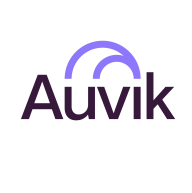

Splunk AppDynamics and Auvik Network Management compete in the network management solutions category for IT infrastructure monitoring. Splunk AppDynamics shows strength in application and infrastructure insights, while Auvik has an edge in network-specific monitoring.
Features: Splunk AppDynamics provides robust application performance monitoring, real-time analytics, and automated root cause analysis. It also offers AIOps-driven insights for deeper infrastructure understanding. Auvik Network Management offers features like network configuration management, performance tracking, and automated network mapping.
Ease of Deployment and Customer Service: Auvik Network Management has a straightforward deployment with its cloud-based model, requiring minimal infrastructure changes and providing strong technical support. Splunk AppDynamics requires a more complex deployment process due to its thorough application and infrastructure monitoring capabilities, which may extend initial deployment time.
Pricing and ROI: Splunk AppDynamics has a higher initial setup cost due to its extensive features, offering substantial potential ROI over time. Auvik Network Management offers competitive pricing focused on network management, delivering value through quick deployment and automated features. Organizations seeking detailed application and infrastructure insights may find Splunk AppDynamics' cost justified, while those focusing on efficient network oversight may see immediate value in Auvik.
Auvik Network Management has definitely helped reduce business disruptions related to network issues.
Auvik Network Management saves me 40% to 50% of our time.
If the network goes down, Auvik Network Management (ANM) opens a ticket, and then we begin working on it.
According to errors, exceptions, and code-level details related to their application performance on a daily basis, the application development team tries to help with Splunk AppDynamics to reduce errors and exceptions, which helps the end users get application availability and feel more confident.
To understand the magnitude of it, when the company asked to replace Splunk AppDynamics with another tool, I indicated that for the proposed tool, we would need five people to do the analysis that Splunk AppDynamics enables me to do.
It's very hard to find ROI because we are currently focused only on the on-premises applications.
They were knowledgeable and responded quickly with accurate and useful information.
They introduced the product to us and explained how to deal with it.
I would give Auvik Network Management support a ten out of ten.
AppDynamics is much more helpful.
We got a contact, an account manager, to work directly with for technical support.
They help us resolve any issues raised by our team relating to operations, application instrumentation, or any other issues.
The platform scales well and supports our organizational needs.
It was capable of handling all those clients perfectly.
We keep adding sites into Auvik Network Management, and it doesn't seem to affect performance or anything on our end.
We have reached maximum capacity in our tier, and extending capacity has not been cost-effective from Splunk's perspective.
I would rate the scalability of Splunk AppDynamics as a nine out of ten.
I assess how Splunk AppDynamics scales with the growing needs of my organization as good, since we are growing and adding more servers.
A lot of platforms, especially when it comes to CRMs, CMSs, and ERPs, are still built on PHP and MySQL, which I feel is archaic now and slow to query.
In terms of stability, I would rate Auvik Network Management as a ten out of ten, as it does not experience jitter or other major issues.
Auvik's automated reporting system also details interferences or any lagging other than outside interference from electrical sources.
It is necessary to conduct appropriate testing before deploying them in production to prevent potential outages.
There are no issues or bugs with the 20.4 version; it is very stable with no functionality or operational issues.
I can rate it nine out of ten.
We were unable to integrate Auvik with a geographical map, which limited our ability to track issues to specific buildings on campus.
Enhancements in API functionality and wider tool support for integration with PSA or RMM tools.
Auvik does a good job of nesting those devices. For example, a bunch of different servers will all be nested in one icon on the map, and when opened up, all those multiple servers can be seen.
Splunk AppDynamics does not support the complete MELT framework, which includes metrics, events, logging, and tracing for the entire stack.
If AppDynamics could develop a means to monitor without an agent, it could significantly improve application performance and reduce potential problems.
A good integration with Splunk would be very interesting, as Splunk is a good product for logs, and that part is currently missing in Splunk AppDynamics.
Auvik is pricey, and we were paying a lot for it, especially when compared to SolarWinds.
The pricing for Auvik Network Management (ANM) is great; it is comparable to other solutions, and for what it does, it actually provides more value for the money than some of the other major competitors.
Auvik Network Management (ANM) pricing or licensing is about 2,500 per year for approximately 4,000 endpoints, which is quite reasonable.
We completed a three-year deal for Splunk and for AppDynamics, which costs millions of dollars.
Customers have to pay a premium price, however, they receive considerable value from the product.
All these solutions at the moment are cheap, but it is like paying for insurance; you pay insurance to avoid major damage.
Auvik Core's ease of use also enhanced troubleshooting speed and efficiency.
Its proactive monitoring and simplified troubleshooting have significantly impacted our efficiency in handling network management tasks.
We can go to different places and monitor, check, configure, and analyze traffic.
We have multiple tools, but end users prefer to use Splunk AppDynamics because their portal navigation is very simple and clear.
The real user monitoring and digital experience monitoring effectively track actual user experience with the applications, including page loading, interaction time for both desktop and mobile applications.
The feature that I appreciate in AppDynamics Browser Real-User Monitoring is the intuitive and user-friendly dynamic mapping it creates for workflows.
| Product | Market Share (%) |
|---|---|
| Auvik Network Management (ANM) | 0.8% |
| Splunk AppDynamics | 2.8% |
| Other | 96.4% |


| Company Size | Count |
|---|---|
| Small Business | 140 |
| Midsize Enterprise | 31 |
| Large Enterprise | 21 |
| Company Size | Count |
|---|---|
| Small Business | 55 |
| Midsize Enterprise | 36 |
| Large Enterprise | 188 |
Auvik Network Management provides comprehensive network monitoring with competitive pricing, offering advanced features and free management of non-critical devices.
Auvik Network Management is known for its intuitive interface and real-time network visibility. Users benefit from features like automated network discovery, mapping, alerting, and TrafficInsights for cost-effective bandwidth monitoring. Its integration with ConnectWise and ticketing systems enhances device inventory updates, SNMP monitoring, and network troubleshooting. However, improvements are needed in reporting, integration capabilities, network map accuracy, customization, and alert configuration. Users suggest expanding device support and improving navigation and monitoring features.
What are Auvik's most important features?Auvik Network Management is widely used by managed service providers and enterprises for network monitoring across industries. It enables efficient management of firewalls, switches, routers, and ensures connectivity over multiple locations. This solution aids in identifying issues, automating backups, and facilitating remote access, offering critical insights on network traffic and device performance. Companies leverage its features to enhance network management and performance.
Splunk AppDynamics enhances application performance monitoring with advanced diagnostics and real-time insights, offering seamless end-to-end transaction tracking and infrastructure visibility.
AppDynamics provides critical tools for businesses to analyze application behavior and performance. Through innovative features like transaction snapshot analysis and adaptable dashboards, users can quickly identify and address issues, ensuring high levels of system uptime and efficiency. It is designed to support complex environments including Kubernetes and AWS, enhancing user experience by detecting performance issues early. Despite needing improvements in network monitoring and integration, it remains a robust option for tracking application health.
What are the key features of AppDynamics?In industries like financial services and e-commerce, AppDynamics facilitates performance tracking across distributed systems, optimizing infrastructure to meet consumer demands. It excels in environments needing precise transaction monitoring and is pivotal in delivering high value and satisfaction.
We monitor all IT Infrastructure Monitoring reviews to prevent fraudulent reviews and keep review quality high. We do not post reviews by company employees or direct competitors. We validate each review for authenticity via cross-reference with LinkedIn, and personal follow-up with the reviewer when necessary.